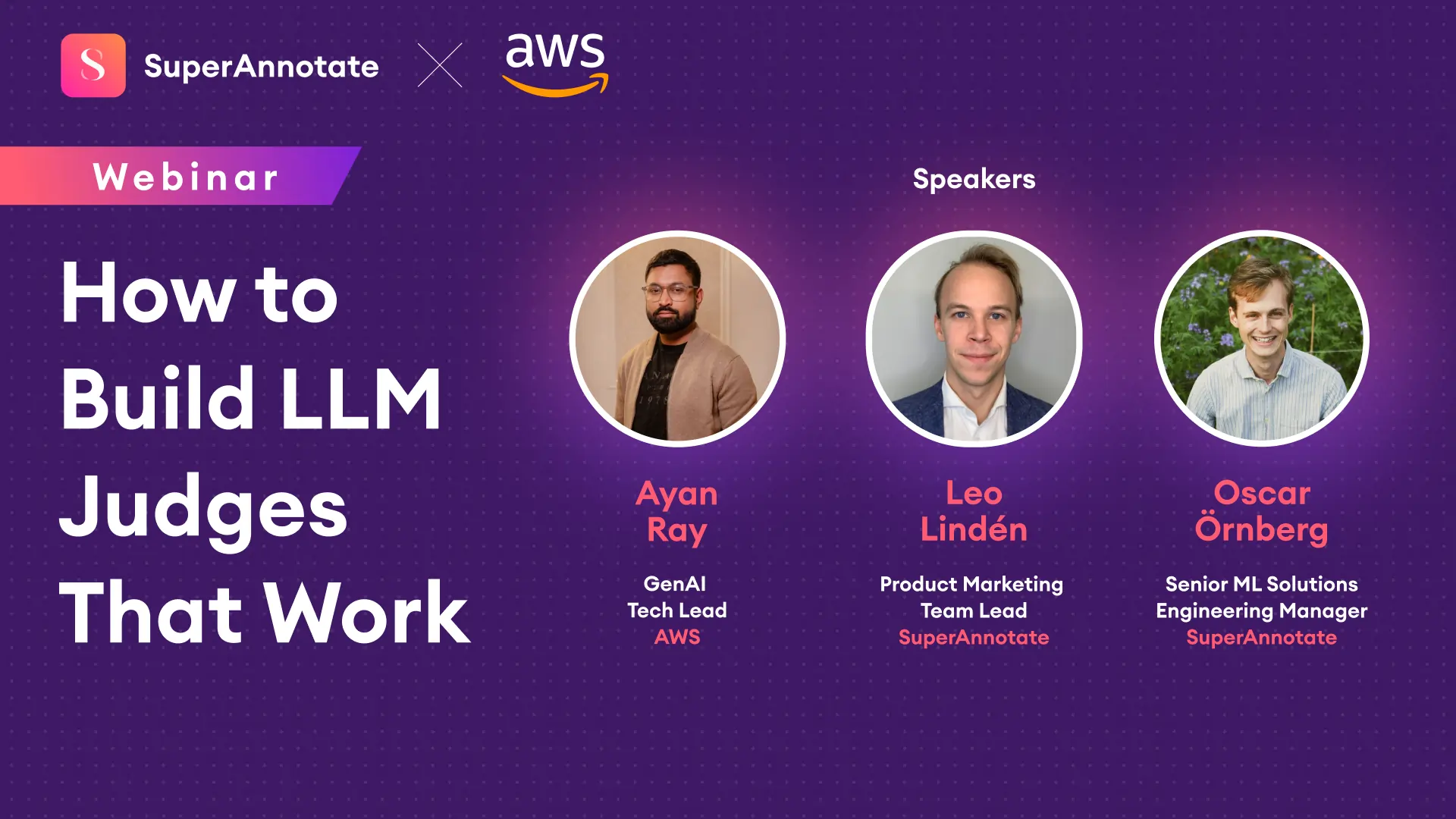Efficiency in dataset preparation is key to accelerating AI innovation. Traditional manual data annotation is notoriously time-intensive, often bottlenecking the development process.
One-shot learning simplifies this step. It allows you to extend a single manual annotation to an entire dataset. It empowers AI teams to shift their focus from tedious data prep to the rewarding aspects of AI development, bringing cutting-edge products to the market faster.
This webinar explores how one-shot learning works and how you can leverage it in your data workflow.
We have entered an era of data-centric AI, where data quality and management have become substantially more important than model algorithms. Large language models such as ChatGPT, for instance, require a large amount of high-quality data. We call this SuperData, which has become the new oil - the driver of successful ML implementations. So, in this age, annotated data is key.
The data pipeline is becoming the main driver of time in projects. Why, though? Because the annotation quality has a direct impact on the quality of the model. However, the real competitive edge lies in proprietary datasets. High-quality, unique datasets are rare and valuable, providing a significant advantage in developing cutting-edge AI solutions.
However, there’s a tradeoff. Gathering high-quality data is expensive. In some cases, you might even need hundreds of thousands of labeled images. There’s a study done by MIT that looks into the importance of data quality in semantic segmentation. Naturally, the model performance was better with higher-quality data, given the same dataset size, but a larger sample of slightly lower-quality data can outperform a smaller set of higher-quality data.
In general, the more time spent on annotating, the faster the model reaches higher performance. The optimal approach is often to use a large set of coarser labels and then finalize the training on a smaller set of high-quality data labels.
This is where foundational models come into play. A foundational model is a fundamental framework or architecture that serves as the basis for developing more advanced and specialized artificial intelligence systems. You can use foundational models to generate new content based on prompts. Meta researchers released a foundational model called Segment Anything Model (SAM) specifically for image segmentation that produces high-quality object masks in a single click.
So, we decided to integrate SAM into our data annotation platform. Users can segment objects with a click of a button. We’ve added other features that make annotation faster than ever:
- Find Similar: Find similar images across an entire dataset.
- Natural Language: Search for and filter out specific items that match the given word or description the most.
- Annotate Similar: Automate and speed up the annotation process with a one-shot annotation technique.
But we’re not stopping here! One downside to generic embedding models and segmentation models is that they’re not fine-tuned to your use case. But we are bringing that to you with Bring Your Own Model (BYOM). You’ll be able to connect your own embedding model and segmentation model to the platform and see the magic happen with something adapted to your use case.
Ready to power your innovation with AI? Then watch the webinar below.




